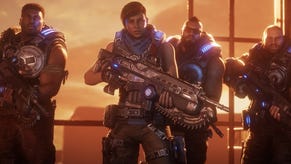Gears 5 PC feels like a spectacular preview of a Scarlett port
It's the best PC conversion we've seen in a long, long time.
Gear 5's PC port is a remarkable piece of work. In fact, in my opinion, it's very, very close to being one of the best PC conversions of all-time. It builds on The Coalition's phenomenal work on Gears 4, but goes several steps further, with graphics options and assets that even outstrip the Xbox One X version. And I can't help but wonder: were elements of this version designed with one eye trained on the consoles to come? The scalability on show here goes significantly beyond additional precision in graphical effects - though obviously, you get that too.
Accessing the vast array of visual features in Gears 5 is a joy, thanks to one of the best settings screens I've come across. There's an insane level of granularity to virtually every option, with all of them explained in terms of how they impact on system performance and what components of the system bear the brunt in ramping up the quality. This is backed up by preview illustrations showing you what the settings changes you're considering actually make to the presentation - something I wish was a standard across the board.
In terms of how the experience is actually improved on PC, The Coalition ticks off the basics much beloved by PC users. The Xbox One X version tops out at a highly respectable 60fps, but the PC version can run with an unlocked frame-rate, with excellent CPU utilisation on many-core processors. This means that hitting a sustained 120fps/144pfs is very much down to your GPU and your settings selection - today's CPUs should be more than equal to the task. On top of that is support for arbitrary resolutions and by extension, ultrawide monitors.
But it's where Gears 5 PC exceeds Xbox One X where things get really interesting. Part of the job in assessing a PC port at Digital Foundry is to see where the console versions compare in terms of available PC options. For my money, the X works on a combination of low, medium and high presets. Some aspects that could potentially challenge the CPU on the console side see further cuts: aspects such as foliage and world detail seems to be lower than PC's lowest presets.
The thing is, PC presents both ultra and insane quality levels, but the biggest boost comes from the inclusion of a downloadable texture pack, which adds a lot of detail to all areas of the game. Bearing in mind that the X has 9GB of useable memory for developers, it's surprising that an even higher quality set of textures is available, and I do wonder if these are indeed the source assets.
There's the sense that PC offers the best of both worlds, with the welcome inclusion of dynamic resolution scaling, allowing native pixel count to scale in line with GPU resources. It's not quite as flawless as the console version - PC lacks some of the SDK features required to preempt a sudden spike in GPU utilisation, so there is some occasional stutter. But for me, as an RTX 2080 Ti user, it allowed me to test the game on the appropriately named insane setting at a target 3200x1800 resolution. If a compromise like that on the most powerful consumer-level GPU available concerns you, the table below should hopefully put your mind at rest. There are big, big gains available simply by dropping to ultra.
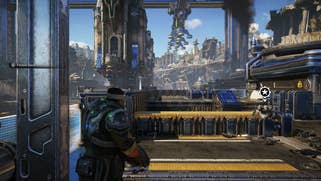
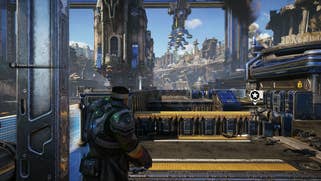






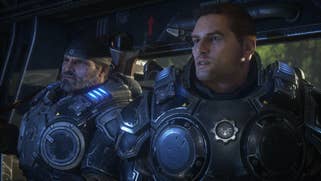














In terms of the best balance between cost and fidelity, my optimised settings for Gears 5 on PC are remarkably straightforward: run everything on the high setting, then ramp up bloom and lens flare to ultra. The PC version's screen-space reflections see a big upgrade over Xbox One X, so if you still have GPU budget to spare, push SSR to ultra or even insane to see big improvements to reflectivity across a broader range of surfaces. And if you still have resources to spare, the next priority would be to bump up shadow quality, then volumetrics.
AMD is promoting Gears 5 heavily and it's fair to say that right now at least, Radeon hardware delivers a significant advantage - up to 25 to 30 per cent faster at 1080p, dropping down to an 11 point lead on average at 1440p. At these optimal settings, only RX 580 is capable of locking to 1080p60, but in both cases, achieving and sustaining a smooth frame-rate simply requires turning on dynamic resolution scaling. At that point, the difference between the two cards comes down to DRS-fuelled resolution changes.
On the face of it, it's good news for Team Red - who have been marketing Gears 5 aggressively. The firm managed to release a new driver for the game's launch, while Nvidia's equivalent is set to arrive this week - a curious delay bearing in mind how on the ball GeForce usually is with driver updates. There's another curiosity here too: the GPU asynchronous compute option in the settings is only available to Radeon users, despite the feature usually showing good gains in Nvidia's more modern architectures - Turing, especially. If this remains in place, the assumption is that The Coalition's implementation actually degrades performance on Nvidia hardware.
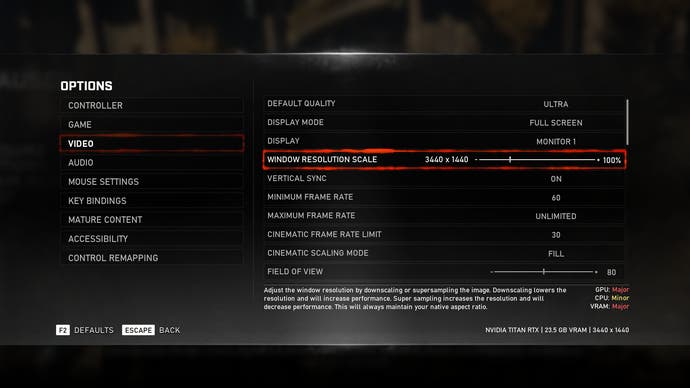
| Insane | Ultra | High | Medium | Low/Off | |
|---|---|---|---|---|---|
| Volumetrics | 100% | 137% | 159% | 163% | 163% |
| SSR | 100% | 116% | 119% | 121% | - |
| Ambient Occlusion | - | 100% | 102% | 104% | 107% |
| Depth of Field | - | 100% | 103% | 106% | 114% |
| Cone Step Mapping | - | 100% | 100% | 102% | 102% |
There's not much to criticise about the Gears 5 PC port - The Coalition has even included the split-screen modes from the console version, an often omitted feature - but there are some issues I'd like to see addressed. Firstly, there is seemingly no support for exclusive full-screen meaning that your desktop resolution and refresh rate is a set 'container' for whatever in-game settings you select. If you've got a 1440p desktop set up, but run the game at 4K, it'll be downscaled and there's not much you can do about it, apart from setting your desktop to your preferred in-game resolution. Similarly, running at higher refresh rates is only possible if your desktop is set accordingly - not a big deal, but a little frustrating.
The Coalition has acknowledged it has issues to resolve, so I'm hopeful that some of my gripes can be resolved. Microsoft itself is also doing its part by making Gears 5 available both on Steam and the Windows Store, with both versions in the Win32 format. It's a welcome shift but surrounding ecosystems apart, there are no differences between the two versions - lack of exclusive full-screen is still an issue on the Steam build and performance via the benchmark is identical. Of course, the Windows Store does give you access to the game on Xbox One S and Xbox One X, and if you're sampling Gears 5 on GamePass, that's a Windows Store thing to - but the point is that as things stand, you're losing nothing by running on Microsoft's platform - though the downloading process is still excruciating.
Ultimately, there's a lot to love here for PC users - to the point where some of the post-process effects 'standards' on consoles that often aren't to the taste of PC users can be individually tweaked and tuned. It's that kind of attention to detail that sets Gears 5 apart, and combined with the macro-scale improvements, I would rank this as one of the greatest all-time PC ports - and while not perfect, it's very, very close.
In terms of hints about a prospective Scarlett upgrade for the game when the new system launches, nothing is set in stone - of course - but what we can see is how The Coalition would scale an existing project onto far more capable hardware. Increased VRAM allocation opens the door to higher definition visuals, while the leap in CPU power could comfortably allow for 120fps frame-rates in the multiplayer modes and higher detail levels in the single-player campaign.
Meanwhile, The Coalition would be free to run the gamut in terms of scalability with its other graphics presets in order to push visual fidelity still further in order to push the much more capable GPU to maximum utilisation. And beyond what we've seen here, there may yet be further surprises - after all, solid-state storage is set to be a key piece of technology baked into the next-gen console designs.
Is such an upgrade likely to happen? Could we see an improved Gears 5 experience on Scarlett? We'd put good money on it, bearing in mind that we've already seen a good example of The Coalition migrating select PC upgrades across to new console hardware in the form of the beautiful Gears of War 4 Xbox One X patch. And on a more global scale, Microsoft's strategy of updating existing games clearly paid off with the X, to the point where we wonder if Sony will follow suit with PlayStation 5.
Whether it's a case of tomorrow's technology today, or simply all about getting the most out of Gears 5 across a vast range of PC gamig hardware, the key takeaway is pretty straightforward: The Coalition's work here is exemplary - and sets the standard for other PC ports in virtually every regard.









